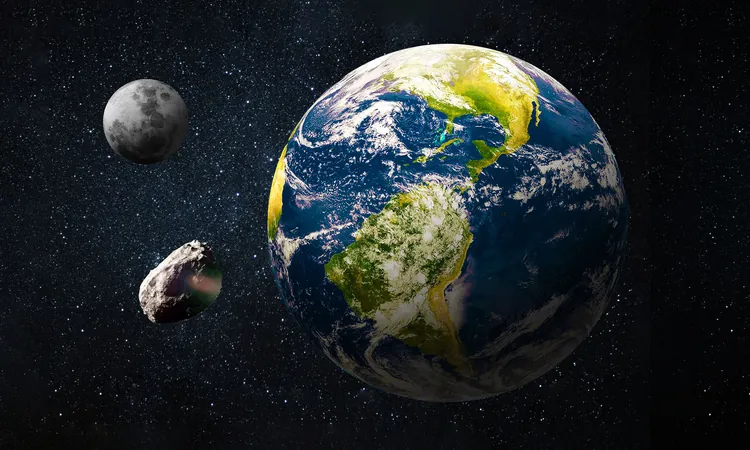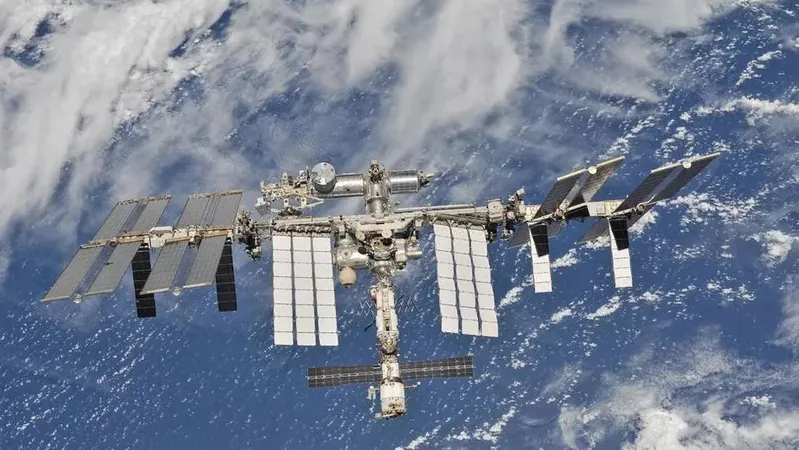
Earth's Mini-Moon 2024 PT5 is Here – But Only for a Little While!
2024-11-03
Author: Ming
On September 29, 2024, a fascinating cosmic event took place: Earth temporarily captured a small asteroid, designated 2024 PT5, transforming it into a mini-moon. Yes, you read that right—Earth has been hosting two moons since that date!
According to Richard Binzel, an astronomer at the Massachusetts Institute of Technology (MIT), such occurrences, although rare, are more common than people realize. "These happen more often than we think, but they’re small and tough to spot," he stated. It’s only recently that advancements in telescope technology have allowed astronomers to detect these fleeting celestial visitors regularly.
The detection of 2024 PT5 was a collaborative effort. Initially spotted by NASA’s Asteroid Terrestrial-impact Last Alert System (ATLAS) at Haleakala Observatory in Hawaii on August 7, 2024, a team from the Complutense University of Madrid later identified the asteroid using a powerful telescope in South Africa. This discovery has excited scientists eager to learn more about near-Earth objects.
What Makes 2024 PT5 Special?
2024 PT5 is a small asteroid, measuring only about 37 feet across, which places it in stark contrast to our much larger and permanent moon, which boasts a diameter of 2,159 miles—over 300,000 times wider! While this mini-moon won’t be around for long, it provides a unique opportunity for scientists to study asteroids up-close, gaining insights into our solar system's workings. Expect 2024 PT5 to linger for about two more weeks, likely drifting away by mid-November.
These temporary captures serve as natural laboratories, according to Binzel, helping scientists understand small bodies near Earth that may play a crucial role in future space missions. William Blackmore, Planetarium Director at Mt. Hood Community College, remarks that all mini-moons are unique; 2024 PT5 is just the most recent example.
The Dance of Gravity
Asteroid 2024 PT5 became a temporary moon due to its close proximity to Earth, allowing our planet's gravity to pull it into orbit. Blackmore likens this to a skateboarder riding the curves of a park—by dropping in, they gain energy while navigating the rounded edges. Similarly, the asteroid glides along in Earth's gravitational field until it eventually breaks free and continues its journey around the sun.
However, spotting mini-moons like 2024 PT5 is no easy feat. These tiny asteroids reflect very little sunlight and zip through space at high speeds, making them nearly invisible without the right equipment. Utilizing advanced telescopes equipped with sensitive detectors, astronomers like those in the ATLAS project scan the night sky searching for new objects—an industrious team effort blending technology and collaboration.
The Importance of Studying Mini-Moons
While 2024 PT5 presents no threat to Earth, studying its trajectory and gravitational interaction enhances our ability to track objects that may cross our paths in the future. Blackmore emphasizes this point, stating that analyzing how these asteroids move is critical for refining our tracking techniques.
Furthermore, as suggested by Todd, understanding how to intercept and redirect asteroids could be vital to safeguard our planet from potential impacts. Proposals for future missions might include sending satellites or probes to explore these orbital visitors, gaining invaluable knowledge about materials that are rarely found on Earth, which could benefit fields such as medicine and technology.
In conclusion, the transient visit of asteroid 2024 PT5 is an exciting reminder of the ever-changing dynamics of our solar system. While it will soon say farewell, its brief stay provides a chance for scientific discovery and an opportunity to enhance our readiness for future cosmic challenges.
Remember to appreciate these fleeting visitors as technology continues to improve, enabling us to spot more mini-moons in the vastness of space. Even if you can’t see 2024 PT5 from your backyard, its existence is a compelling aspect of our ongoing exploration of the universe.

 Brasil (PT)
Brasil (PT)
 Canada (EN)
Canada (EN)
 Chile (ES)
Chile (ES)
 España (ES)
España (ES)
 France (FR)
France (FR)
 Hong Kong (EN)
Hong Kong (EN)
 Italia (IT)
Italia (IT)
 日本 (JA)
日本 (JA)
 Magyarország (HU)
Magyarország (HU)
 Norge (NO)
Norge (NO)
 Polska (PL)
Polska (PL)
 Schweiz (DE)
Schweiz (DE)
 Singapore (EN)
Singapore (EN)
 Sverige (SV)
Sverige (SV)
 Suomi (FI)
Suomi (FI)
 Türkiye (TR)
Türkiye (TR)